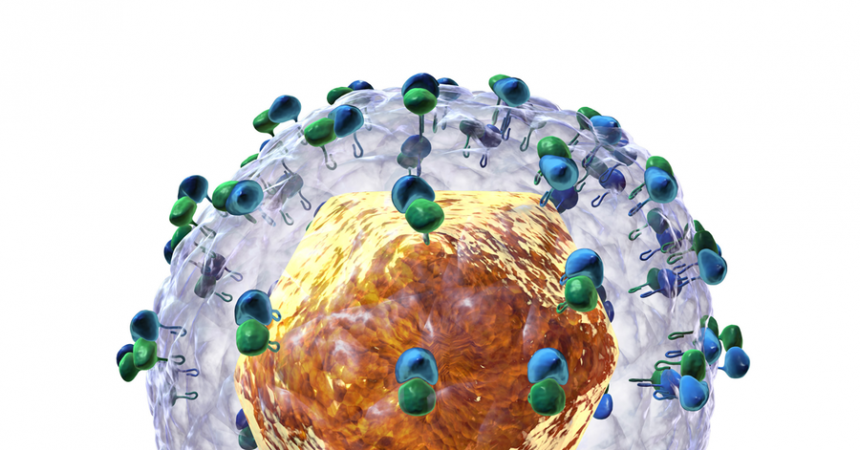The 2020 Nobel Prize in Physiology or Medicine is awarded jointly to Harvey J. Alter, Michael Houghton and Charles M. Rice “for the discovery of Hepatitis C virus”. Thanks to their discovery, highly sensitive blood tests for the virus are available and have essentially eliminated post-transfusion hepatitis in many parts of the world, greatly improving the global health.
The hepatitis C virus confirmed by modern medicine can be traced back to the icteric hepatitis that was popular in 3000 BC. The outbreak and spread of hepatitis C in modern times is more like a cloud of dark clouds spreading on the battlefield of World War II. Shortly after World War II, scientists proposed hepatitis A virus and hepatitis B virus constructively based on past experiences and hepatitis cases of soldiers in World War II, and indirectly led to the discovery and treatment of hepatitis C virus.
After 1965, hepatitis B and hepatitis A viruses were discovered one after another, but Professor Harvey J.Alter soon discovered that they were not all hepatitis viruses. Because nearly 80% of the hepatitis samples found after blood transfusion belong to neither hepatitis B nor hepatitis A. This means that there is a third hepatitis virus, like hepatitis B virus, which is transmitted by blood and other body fluids and spreads silently among people, which becomes a potential risk affecting blood transfusion and even human health.
For 15 years, limited by medical research methods at the time, Professor Alter and his team were unable to see the true face of the third hepatitis virus. But they still do their best to erect a safe protective wall for the world. By increasing blood transfusion tests, they reduced the number of post-transfusion viral hepatitis infections from 33% to 4%, and left clues to the discovery of the virus-culturing a mysterious third hepatitis infection serum in chimpanzees and leaving it to a successor who could crack the code.
In 1989, Professor Michael Houghton and his team took over the baton. Using molecular biological cloning technology, they isolated the RNA fragment of hepatitis C virus (HCV-RNA), which made the detection of hepatitis C enter a new stage of precision from the previous elimination method.
Through this technology, scientists have been able to detect that 88% are neither hepatitis B nor hepatitis A cases, but hepatitis C. Such tests were quickly applied to blood transfusion and blood product screening around the world, and by 1992, with the improvement of technology, hepatitis C virus was almost eliminated from blood transfusion and blood products supply, protecting millions of patients from hepatitis C infection every year.
Professor Charles Rice and Professor Ralf Bartenschlage have made a breakthrough in overcoming the problem of “infecting living cells with the hepatitis C virus”. Professor Rice compared a large number of hepatitis C virus RNA isolated from patients, and found their consensus sequence. After this “standard” RNA was injected into orangutans, it successfully caused hepatitis C infection. Two years later, based on Professor Rice’s research, Professor Battenschrag further found the first cell line that allows the hepatitis C virus to replicate efficiently. A year later, Professor Rice also reported on the Science a brand-new cell line independently developed by his team.
The two big news detonated the entire academic circle and industry. People finally have the tools that can be used to screen drugs for hepatitis C and lay the foundation for the development of direct-acting antiviral agents (DAAs). Through continuous experimental screening, scientists found that NS3/4A protease, NS5A protease and NS5B polymerase have the potential to become targets for conquering hepatitis C. If drugs can be developed to effectively target these targets, it can greatly interfere with hepatitis C virus replication.
In 2011, FDA approved the sale of the anti-HCV drug, telaprevir. The results showed that compared with the previous “standard regimen” for the treatment of hepatitis C, telaprevir targeting NS3/4A protease had higher antiviral activity, better safety and tolerance.
In 2013, the birth of NS5B inhibitor sofosbuvir was a milestone for scientists in the history of hepatitis C. It is the first direct antiviral drug that can effectively cure hepatitis C without interferon, revolutionizing the treatment of hepatitis C and freeing patients from the side effects of interferon. In clinical trials, sofosbuvir showed a 100% cure rate for patients with hepatitis C types 2 and 3.
The fight against hepatitis C seems to be coming to an end, but scientists’ efforts are not over yet. At present, both hepatitis A and hepatitis B already have preventive vaccines, but there is no vaccine for hepatitis C. Compared with hepatitis A and hepatitis B virus, hepatitis C virus mutates more easily, which brings complex challenges to the development of hepatitis C vaccine.

